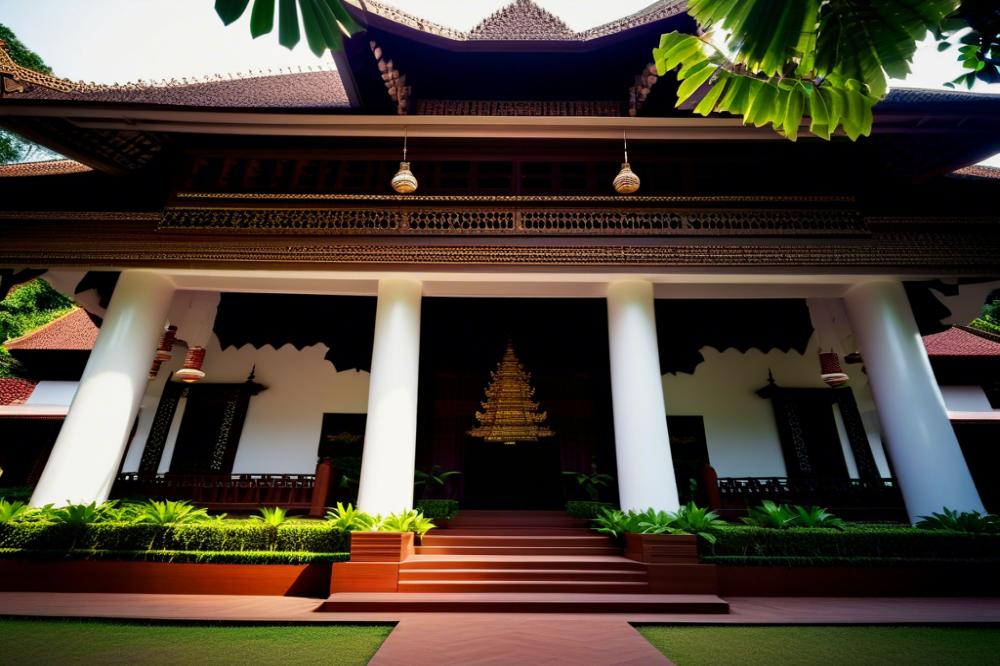A Cultural Experience at the Chiang Mai Tribal Museum
Chiang Mai, located in Northern Thailand, stands out as a premier destination for adventure holidays. Visitors are drawn to its rich natural landscapes and vibrant culture. Many come seeking trekking opportunities, exploring ancient temples, or experiencing the local food scene. This city offers a multitude of experiences that cater to a variety of interests.
Amidst this backdrop, the Chiang Mai Tribal Museum presents a fascinating window into the lives of indigenous peoples in the region. Here, the significance of tribal cultures comes to life through carefully curated exhibits. The museum showcases the diverse traditions and lifestyles of the many ethnic groups that call Northern Thailand home. Through various displays, guests can engage with the rich cultural heritage of these communities, deepening their understanding of local customs.
The aim of visiting such a place is to explore tribal cultures and learn about the history that shapes them. Museum exhibits feature historical artifacts and interactive displays that bring local traditions to the forefront. Tourists can witness the ethnic diversity that exists in this beautiful region, gaining insights into the lives and practices of its people. A visit to this cultural hub enables a greater appreciation for the intricate tapestry of life that defines Chiang Mai.
The Importance of the Chiang Mai Tribal Museum

This museum plays a crucial role in preserving local traditions and cultural heritage. By focusing on the indigenous peoples of Northern Thailand, it highlights the rich tapestry of tribal cultures that exist in the region. Visitors can explore various museum exhibits that showcase everyday life, rituals, and customs of these communities.
Many interactive displays allow guests to engage with the content. These hands-on experiences make traditions more relatable and memorable. Historical artifacts also play a significant part in the storytelling process. They give visitors a glimpse of how the tribes have maintained their identity amid modern changes.
Cultural education is another important contribution to tourism in Chiang Mai. Tourists seeking authentic experiences often find this museum a fascinating destination. The understanding gained here adds depth to their visit and enriches their knowledge of ethnic diversity.
Local traditions are not just showcased; they are celebrated. By promoting appreciation for these practices, the museum fosters respect among visitors from various backgrounds. This approach creates a welcoming environment where everyone can learn something new about the unique heritage of the area’s people.
Exploring Museum Exhibits

At the Chiang Mai Tribal Museum, visitors can delve into the rich tapestry of tribal cultures. This facility offers insights into the lives of indigenous peoples from Northern Thailand. Various museum exhibits showcase traditional clothing, crafts, and daily living tools. Each display allows guests to feel like they are traveling back in time. Bright colors and intricate designs reflect the unique artistic expressions of these communities.
In addition to lively displays, historical artifacts provide a deeper understanding of cultural heritage. Items such as handmade baskets and ceremonial weapons are on view. They highlight the skills and ingenuity of different ethnic groups. Stories woven through these objects connect the past with the present. Museum visitors gain knowledge about the challenges these communities have faced throughout history.
Moreover, interactive displays engage visitors in a memorable way. They can participate in activities that demonstrate local traditions. For instance, some stations allow guests to try their hand at traditional weaving or rice planting. These hands-on experiences foster a greater appreciation for the people and their customs. Tourists exploring Chiang Mai find these exhibits not only educational but also enjoyable.
Cultural Heritage and Local Traditions

The Chiang Mai Tribal Museum serves as a gateway to understanding the rich traditions of various tribes in Northern Thailand. Visitors can explore how each tribal culture presents its unique identity through clothing, festivals, and rituals. There are approximately 20 different ethnic groups represented, highlighting the region’s remarkable ethnic diversity.
Local traditions are showcased through detailed museum exhibits featuring historical artifacts. These pieces reflect the daily lives and customs of indigenous peoples. One can find textiles, tools, and crafts that tell stories of resilience and creativity. Each exhibit invites visitors to engage deeply with the heritage of these communities.
Furthermore, the museum promotes understanding of local customs by incorporating interactive displays. These engaging elements allow guests to participate, learn, and appreciate the ways of life that may seem foreign. Educational programs and guided tours help connect people to the significance of these traditions, fostering a sense of respect and awareness.
Preserving cultural heritage is crucial, especially in the face of modernization. With the rapid growth of tourism in Chiang Mai, indigenous cultures risk becoming overshadowed. The museum plays an essential role in protecting these rich histories. Educational initiatives inspire visitors to acknowledge and safeguard traditions that might otherwise fade away.
Ultimately, this museum not only informs but also encourages a deeper connection between guests and the local tribes. It emphasizes that understanding and appreciating these cultures is vital for maintaining their legacy amidst the changes of modern society.
The Ethnic Diversity of Northern Thailand

Northern Thailand is home to a rich tapestry of ethnic groups. The Chiang Mai Tribal Museum showcases various indigenous peoples from the region. Each group brings its own distinct tribal cultures and traditions, which contributes to the cultural heritage of Thailand. Visitors can explore numerous exhibits that highlight this diversity and the stories behind each community.
Celebrating ethnic diversity is crucial for fostering understanding among different groups. It promotes respect and appreciation for the myriad ways of life that exist within the same geographical area. Local traditions are not just remnants of the past; they are living, breathing aspects of daily life that continue to shape the identities of these communities.
The museum offers a wealth of interactive displays that engage visitors. These hands-on experiences allow one to connect with the heritage in a profound way. Alongside artifacts, such as clothing and tools, these exhibits reveal how everyday items hold historical significance. They tell tales of survival, adaptation, and resilience among the various tribes.
Tourism in Chiang Mai often includes visits to the museum, as it stands as a beacon of awareness. It educates tourists about the rich cultural fabric of the area and encourages conversations about social issues. By presenting these narratives, the museum increases appreciation for the diverse ways people live and express their identities.
Learning about the indigenous peoples of this region fosters empathy and insight. The exhibits serve as a vital resource for anyone seeking to understand the past and present of these communities. Celebrating this diversity creates a stronger bridge between locals and visitors, enriching the experience for all.
Visitor Experience and Tourism in Chiang Mai
Tourists can expect a rich Cultural Experience at the Chiang Mai Tribal Museum. This museum highlights the various tribal cultures from Northern Thailand. Visitors will find engaging displays that showcase the lives of indigenous peoples. The museum exhibits include traditional clothing, household items, and artistic expressions that illustrate local traditions. Each section offers a glimpse into the diverse ethnic diversity of the region.
Tips for Engaging with the Exhibits
To maximize the experience, spend time interacting with the interactive displays. These hands-on experiences allow visitors to better understand the customs and lifestyles of different tribes. Reading the informative signs can deepen your appreciation for the historical artifacts on display. Consider asking museum staff questions; they often have stories to share about the culture and its significance. Taking photos can capture memories, but always respect the rules regarding photography in certain areas.
The Museum’s Role in Enhancing the adventure holiday Experience
This museum plays a vital role in tourism in Chiang Mai. It provides context for the adventure holiday experience in the area. Tourists visiting nearby attractions will benefit from the knowledge gained here. Learning about cultural heritage helps travelers connect more with the landscape and its people. Participating in workshops or guided tours can also enrich a trip, making it more immersive and memorable.
A Cultural Journey Awaits
The Chiang Mai Tribal Museum plays a significant role in preserving and showcasing the diverse tribal cultures of Northern Thailand. Visitors gain insights into the rich heritage of various ethnic groups. Exhibits illustrate daily life, traditions, and the struggles these communities face. Through interactive displays and artifacts, one can appreciate the richness of their stories.
A visit to the museum offers more than just information; it sparks curiosity and connection. Many guests find themselves reflecting on their own cultures while discovering the vibrancy of others. Engaging with the exhibits helps deepen understanding and fosters respect for different ways of life. Personal experiences shared by community members add an emotional layer that enhances the visit.
Experiencing the Chiang Mai Tribal Museum is essential for anyone traveling through Northern Thailand. It provides a rare opportunity to engage with the roots of local communities. Every corner of the museum invites exploration and creates memorable moments. When planning a trip, including this museum is a chance to expand horizons and create lasting memories.



